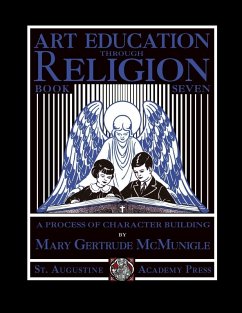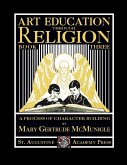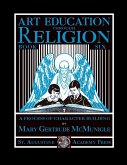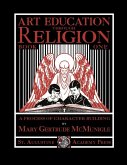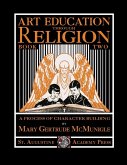Art Education Through Religion is a series of graded textbooks on art and industrial design developed in the late 1920s by Mary Gertrude McMunigle, who was Director of Art for the Diocese of Pittsburgh at the time. This endeavor was overseen by two priests: Rev. Paul E. Campbell, A.M. LitD, who was then superintendent of Parochial Schools for the Pittsburgh Diocese, and Rev. Raymond V. Kirk, A.B. PhD, Dean of the College of Education of Duquesne University. Yes, this art curriculum actually has an imprimatur! Each lesson aims to improve the student's appreciation and skill in art, while at the same time imparting both spiritual and character objectives. Therefore the use of this series trains not only the eye, but the whole person, including the intellect and will. Students gain knowledge, self-control, accuracy, reverence, helpfulness and good manners, as well as many other useful life skills. Book Seven makes a return to color theory, covering analogous and monochromatic harmonies, and guides students to a strong intuition for pleasing color choice in conjunction with compositional principles such as balance, number, accent, and intensity, with many character-related analogies along the way. Clay modeling skills are challenged through study of Gothic architecture and stained glass artistry, and students continue to learn the subtle arts of spatial arrangement and design. **An important note**: though the levels were designed to correspond with grades one through eight, they work best as a system. If a student in the third grade or above begins to use this series for the first time, it is recommended that they begin at least one or two levels previous to their current grade level, and not later than level five. Many of the concepts introduced at the upper grade levels may prove frustrating to successfully master without the foundations laid in these earlier grades.
Bitte wählen Sie Ihr Anliegen aus.
Rechnungen
Retourenschein anfordern
Bestellstatus
Storno

